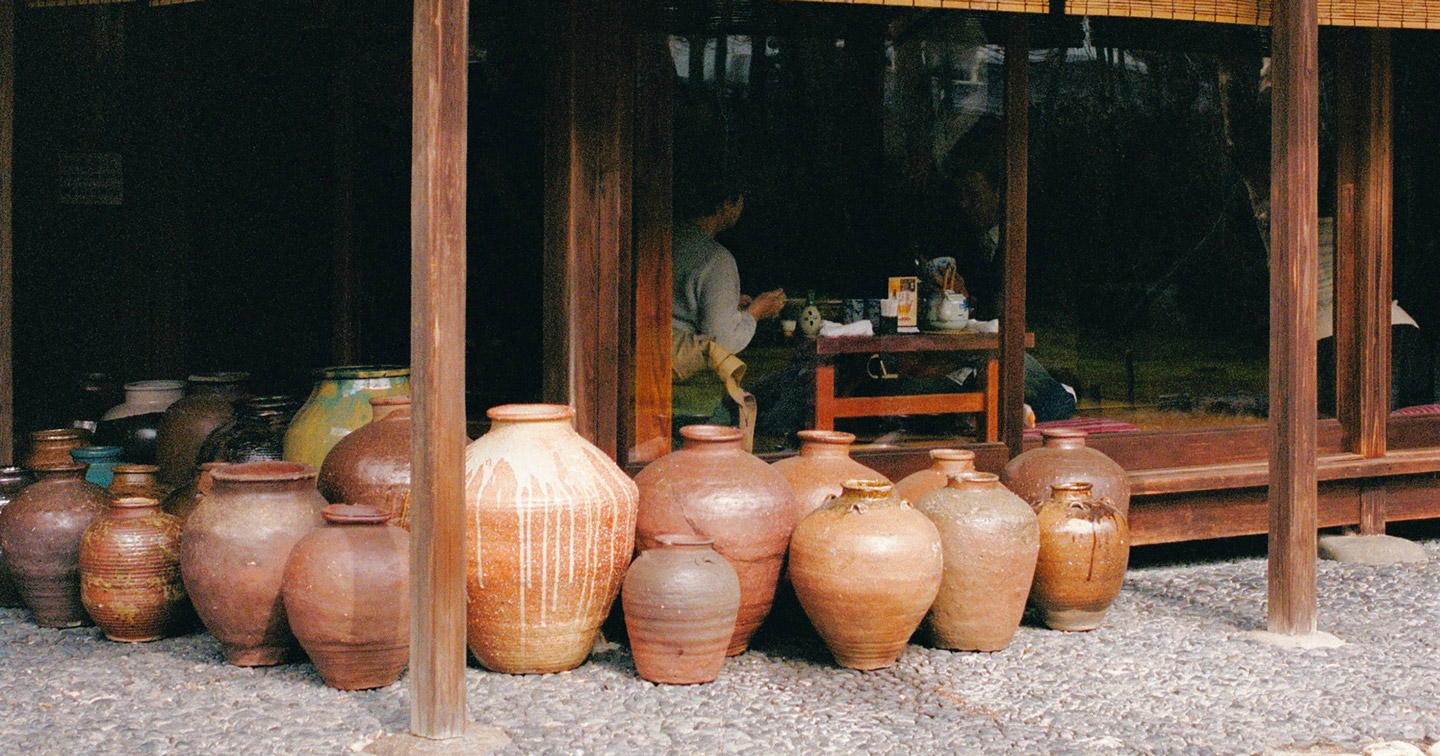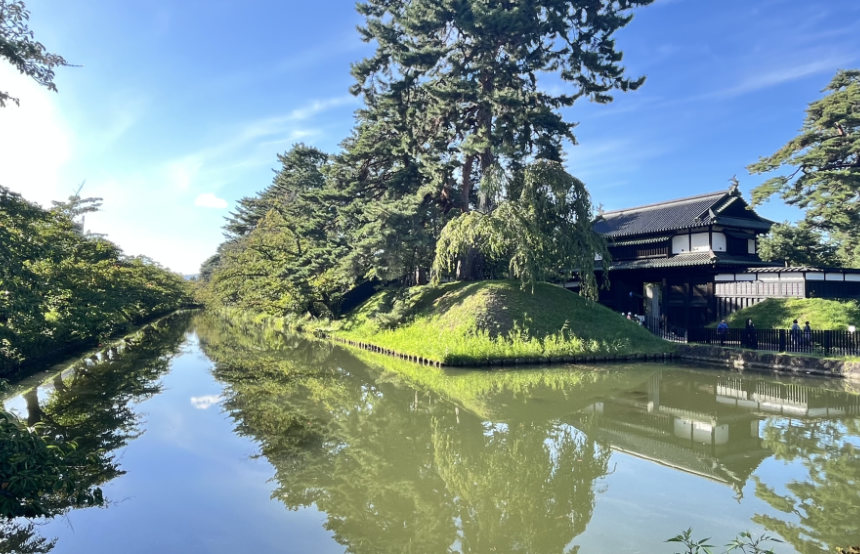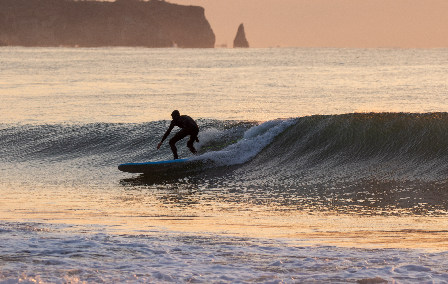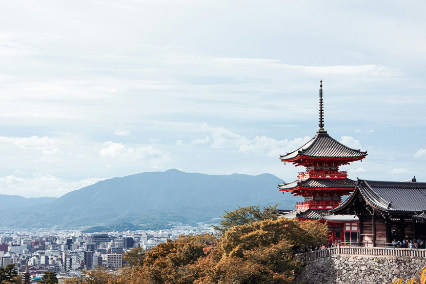Published 28th Jul. 2025
Reading time
Japan is world-renowned for its spectacular scenery – and it’s easy to see why. From shimmering lakes and cascading waterfalls to lush forests and majestic mountains, its natural beauty is truly something to behold. So, whether you’re looking to cycle through the lush pine trees at Amanohashidate or relax on the white-sand beaches of the Amaharashi Coast, we’ve got you covered. Read on to discover our shortlist of the most unmissable Japanese landscapes…
There might be numerous beautiful Japanese landscapes, but only three were named the most scenic in 1643. Among these was Amanohashidate, a stunning sandbar in the Kyoto prefecture that’s said to resemble a bridge between heaven and earth. This two-mile-long stretch links the two sides of Miyazu bay and features white-sand beaches and almost 8,000 emerald pine trees, encircled by sparkling blue water.
Feeling active? Enjoy a walk or cycle along the path in the centre of the sandbar. However, we think Amanohashidate is best appreciated from one of the viewpoints in the hills surrounding the bay – hop on a cable car up to Kasamatsu Park for spectacular views over the water. To experience the sights like a local, try looking down at the bay in the traditional matanozoki position: turn your back, bend over and marvel at the view from between your legs.

Image by Elisete Shiraishi / Getty Images.
Kumano Nachi Taisha isn’t just one of the most beautiful Japanese landscapes: it’s also an important cultural and religious site. Part of the iconic Kumano Kodo trail, a historic pilgrimage route, Kumano Nachi Taisha is one of the three famed Shinto shrines. While it was originally entirely Shinto, this shrine now sits next to the Buddhist temple Seiganto-ji, demonstrating the gradual blend between the religions after Buddhism was introduced to Kumano in the sixth century. Wander through the temple buildings and admire the natural scenery before making your way to the Seiganto-ji pagoda, a three-story crimson building that shines against the surrounding lush forest.
The Nachi Taisha shrine and pagoda aren’t the only things that make this one of our favourite Japanese landscapes. Just a short distance from the temple buildings is Nachi Falls, the tallest waterfall in Japan. This picturesque 400ft waterfall is also a symbol of religious significance, and was worshipped even before the Shinto and Buddhist shrines were constructed.

Image by Cristi Croitoru / Getty Images.
Literally translating to ‘99 islands’, Kujukushima is a collection of islands dotted between Sasebo Port and Hirado. Despite its name, the archipelago actually contains 208 islands, with only four inhabited by humans. Many islands are coated in a thick blanket of emerald forests, and the puzzle-piece nature of the islands creates a beautifully distinctive picture from above.
Kujukushima is part of Saikai National Park, and while you can explore the archipelago on a boat tour, there are limits in place to protect the pristine waters and distinctive islands. We’d recommend heading up to Ishidake Observatory instead, where you can take in a stunning 360º view across the islands from the top of Mount Ishidake. If you’re still not convinced, take Hollywood’s word for it: the opening scenes of Tom Cruise’s The Last Samurai were filmed here.

Image by kato / Getty Images.
Cameras at the ready: the Amaharashi Coast is the definition of picture-perfect. Literally, in fact, as it has long inspired artists, writers and poets. Lined with bristling pine trees and powdery beaches, the rugged coastline looks out on the sky-scraping Tateyama Mountain Range. The snowcapped peaks tower dramatically over the shimmering blue water beneath them, creating a contrasting skyline so breathtaking that famed poet Otomo no Yakamochi wrote verses imploring friends to come and witness it.
Amaharashi is beautiful all year round, but summertime brings the perfect conditions for swimming in the bay’s pristine waters. If you’re travelling as a family, you’re in luck: youngsters will love taking a dip in the shallow water and playing in the sand. Once you’ve had swimming fix, sit back on the beach and wait for the setting sun to paint the sky golden.

Image by I Love Photo And Apple. / Getty Images.
Located in Shiretoko National Park, a UNESCO World Heritage site, the Shiretoko Goko Lakes are last (but not least) on our list of unmissable Japanese landscapes. Each of the five lakes forms part of a five-point formation, said to resemble the fingerprints of a god. With their electric blue water reflecting the Shiretoko Mountains, you won’t resist snapping a photo or two.
If you’re partial to a wander (with a side of stunning views), you’re in luck. While the lakes are linked mainly by grassy trails, we think the best view is from the elevated wooden path leading to the first lake. This walkway spans just under half a mile and features a number of viewing platforms with breathtaking vistas of the Shiretoko Mountains. Keep your eyes peeled as you walk, too – you might catch sight of a brown bear ambling underneath the wooden beams.

Image by Elico-Gaia.
Written by Emma Begley | Header image by Shun Idota / Unsplash.

Whether you’re a family seeking Tokyo’s futuristic museums or a couple wishing to relax in Hokkaido’s onsens, we’ve got you covered. Our consultants have first-hand experience of living in Japan, so we know the secret spots off the beaten track (and how to reach them). Train travel is the best and most efficient way to explore the country, and wherever you visit, getting to grips with Japan’s diverse culture is a must. We work with guides who provide in-depth experiences on the history of Samurai or Geisha culture, and we have hand-picked traditional ryokan properties to rest your head in.
ENQUIRE NOWPractical advice and inspiration for your next trip

On a recent research trip to Japan, our Asia specialist, Joyce, spent ten days exploring the lesser-trodden treasures of Tohoku, in northeast Honshu. She stayed in cosy mountain-framed ryokans, hiked along Iwate’s rugged coastline and admired Japan’s deepest lake – all without the crowds. From sipping smooth sake to sampling fresh uni, it was a trip for the books. Keen to know more? Read on for the most memorable moments from Joyce’s time in Japan.
24th November 2025 - Japan Travel Tips

Surfing may not be as synonymous with Japan as sushi or sake, but there’s a thriving surf scene in the ‘Land of the Rising Sun’. The annual typhoon season (especially between August and October) brings powerful swells to Japan’s Pacific Coast, making this the optimal time to hit the waves. And with almost 18,500 miles of coastline to choose from, there’s no shortage of shores. Keen to narrow down the options?
12th August 2025 - Japan Beaches & Islands

Japan is world-renowned for its spectacular scenery – and it’s easy to see why. From shimmering lakes and cascading waterfalls to lush forests and majestic mountains, its natural beauty is truly something to behold. So, whether you’re looking to cycle through the lush pine trees at Amanohashidate or relax on the white-sand beaches of the Amaharashi Coast, we’ve got you covered. Read on to discover our shortlist of the most unmissable Japanese landscapes… Amanohashidate Sandbar,
28th July 2025 - Japan Travel Inspiration

Our team of destination experts will get to know you and your unique requirements for your holiday

We work with you to build an ultra-personalised holiday itinerary with your choice of accommodation, experiences and activities

All of our holidays include little extras designed to make a big difference to your trip, from fast-tracking you through airport check-in and security to our network of local Concierges